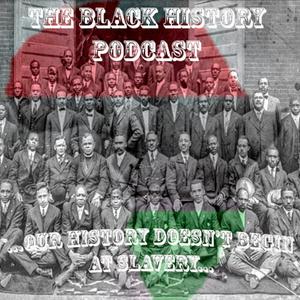George Crum - "Leaving Crum(b)s Through History"
In the United States, potatoes are the second most consumed item, just behind rice. But when potatoes are thin sliced, fried and salted, they go from being the number two consumed food to the number one snack food of choice.
George Crum, also known as George Speck, was born in 1824 in Saratoga Springs, New York to a Native American mother and African American father. When he was a young man, Crum worked as a guide in the Adirondack Mountains and an a Native American trader. Eventually however, he realized he had an exceptional ability to cook, and the culinary arts was his calling.
By the summer of 1853, Crum found himself as the head chef at one of Saratoga Spring’s fanciest restaraunts, the Moon Lake Lodge resort, where like many other places, French fries was a famous staple of the menu. Though Crum could make French fries, his specialties were really in his seasoned preparation of wild game like venison and duck, with him not afraid to push the envelope and really experiment with flavors and pairings in the kitchen.
In 1853, Crum was in the Moon Lake kitchen creating his famous French fries for a patron. Well apparently, the diner wasn’t happy with way his fries were cut, and sent them back asking for them to be cut thinner. Crum obliged, and cut them thinner. The diner STILL wasn’t happy, claiming the fries were too soggy, and sent the fries back again. According to legend, Crum was a bit more then perturbed and purposefully sliced the new batch of potatoes as thin as he possibly could, and then purposefully fried them as hard and as crunchy as possible. To top the new batch off, he salted them about as heavily as he could and served it up. Crum, despite his reputation for such amazing cuisine, tried to sabotage his own client. But, to Crum’s surprise, the diner LOVED this new creation, and with his new hit… a new snack was born.
By 1860, Crum had ventured to open his own restaurant in Malta, New York, invariably called “Crum’s House”. Crum’s restaurant was in ridiculously high demand among tourists to the Saratoga Springs area, and even the wealthy seasonal residents of the area. According to diners, “his prices were that of the fashionable high end New York City restaurants, but the food and service were more than worth it, with everything possible raised on his own small farm, and even his farm got his personal attention whenever he could manage to handle both.”
The famed Commodore Cornelius Vanderbilt once was obligated to wait over an hour and a half for a meal.”
Though United States’ patent law was created with color-blind language to foster and encourage innovation, the patent system consistently excluded these inventors from their due recognition. Because of these uphill battle in getting a patent, George Crum never even attempted to patent his potato chips, or the process for their creation. Eventually potato chips were being mass produced without him receiving any credit. Today, Americans alone consume about 1.5 billion pounds of potato chips each year.
George Crum died at the age of 90 in 1914; but his potato chips will forever live on.
16 October 2017, 2:45 am
